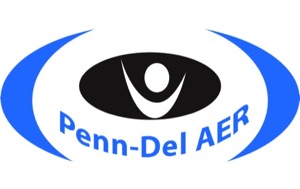
Advocacy for the Alice Cogswell and Anne Sullivan Macy Act
Link: https://www.afb.org/advocacy-cogswell-macy-act
Advocacy for Accessible Prescription Labels
There is new pending legislation in Pennsylvania which would require pharmacies to provide accessible prescription labels to those who are blind or low vision or otherwise print impaired. The bill is HB 125. The sponsor of HB 125, Representative Dan L. Miller, is asking for feedback and testimony regarding this important disability legislation.
Here is the draft legislation. You and your clients/students can send your feedback to:
Representative Dan L. Miller
217 Irvis Office Building
P.O. Box 202042
Harrisburg, PA 17120
Or email his staff, Stephanie Hardman at shardman@pa.house.net
You can also let your own local representative know how important this bill is as well. Sponsors of HB 125 include Representatives Dan Miller, Thomas Murt, Robert Freeman, Ed Neilson, Justin Simmons, Anthony DeLuca, Carol Hill-Evans, William Kortz, and Joanna McClinton.
Penn-Del AER encourages you to provide your feedback on this legislation.
Information about the Cogswell-Macy Act
Workforce Innovation and Opportunity Act
President Obama signed into law the Workforce Innovation and Opportunity Act (WIOA), July 23, 2014, the long awaited reauthorization of the 1998 Workforce Investment Act (WIA). The bill, which passed the House and the Senate with overwhelming bipartisan support, also reauthorizes the Rehabilitation Act of 1973. A press release from the Senate Committee on Health, Education, Labor, and Pensions (HELP), which played a major role in crafting the legislation, says the new law will meet the demands of a rapidly changing workforce. A study from the Georgetown University Center on Education and the Workforce anticipates the shortage of participants in the U.S. workforce with a post-secondary education will reach 11 million by 2022. The new law increases the focus on regional and local efforts with the elimination of 15 federal programs. State and local workforce development boards will see changes to their composition designed to make them smaller, more nimble and more strategic.
The new law includes some significant changes to the Rehabilitation Act provisions authorizing vocational rehabilitation services across the country. Major changes for persons with disabilities include:
• An increased focus on preparing youth with disabilities for competitive integrated employment;
• The transition of Centers for Independent Living (CILs) from the Department. of Education to the Department of Health and Human Services;
• Changes in the certification process for vocational rehabilitation counselors.
One controversial section of the original Senate bill (known as Section 511), focused on transitioning youth into subminimum wage employment. A compromise reached in the final law requires vocational rehabilitation offices to complete a series of steps before sending any person into a subminimum wage employment setting. These steps include providing a chance to work in a competitive integrated setting, or supported employment if deemed necessary.
